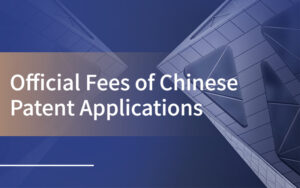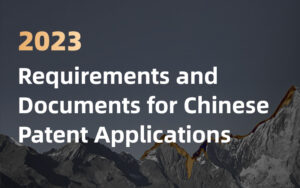Patent Prosecution Procedures in China
Generally speaking, prosecution procedures of Chinese patent applications, expecially for inventions, include five steps: acceptance, preliminary examination, publication, substantive examination and grant. However, examination procedures of CN utility model or design patent application do not include publication and substantive examination.
For the purposes of this article, we will focus on examination procedures of CN invention patent application. The picture below outlines examination procedures of CN invention patent application.

Step 1 Appointment of Patent Agency and Acceptance of Patent Filing
Pursuant to Article 19 of the Chinese Patent Law, any foreigner, foreign enterprise or other foreign organization having no habitual residence or business office in China applies for a patent, or has other patent matters to attend to, in China, it or he shall appoint a legally incorporated patent agency to act as its or his agent.
The application can be hand-delivered or mailed to the office of China National Intellectual Property Administration (CNIPA) in Beijing or you can file it via the CNIPA’s representative offices located in provincial intellectual property offices. The easiest way, however, is to submit the application online on the website of CNIPA.
Step 2 Preliminary Examination
The Preliminary examination of a patent application for invention is an indispensable procedure after receipt of the application and before its publication.
Its main tasks are to
- examine whether or not the application documents submitted by the applicant are in conformity with the provisions of the Patent Law and its Implementing Regulations;
- examine whether or not the other documents relating to the application were submitted by the applicant within the time limit prescribed in the Patent Law and its Implementing Regulations, or specified by the Patent Office;
- examine whether or not the time limit of payment of any relevant fee paid by the applicant and the amount of such fee are in conformity with the provisions of the Patent Law and its Implementing Regulations.
For example, the title of the invention in the request shall be identical with the one in the description, and the title shall not include non-technical terms, such as the name of an individual or entity, trademark, code or model, etc.
During preliminary examination, for a patent application whose application documents have defects that can be eliminated through rectifications OR obvious substantive defects that cannot be eliminated through rectifications, the applicant will receive the Notification to Make Rectification OR an Office Action, in which the defects existing in the patent applicant will be pointed out and the time limit for response will be specified.
If a patent application has passed the preliminary examination, the applicant will receive the Notification of Passing Preliminary Examination and the application will enter into the publication procedure.
Step 3 Publication
If a patent application is successfully preliminary examined, it will be published in the Invention Patent Gazette within 18 months from the application filing date. However, upon the request of the applicant, CNIPA may publish the application earlier.
Step 4 Substantive Examination
After the Chinese patent application is successfully preliminary examined, it will enter into substantive examination as long as the applicant has filed a request for substantive examination. The request for substantive examination must be filed within three years from the filing date or, if priority is claimed, from the earliest priority date, and the substantive examination fee must be paid in full within the time limit. Otherwise, the application shall be deemed to have been withdrawn. CNIPA will not start the substantive examination for the application until it is specifically requested to do so.
The purpose of substantive examination is to judge whether the patent right shall be granted to an invention application, especially whether the application meets the requirement of novelty, inventive step and practical applicability.
If in the course of substantive examination, CNIPA finds that the invention application is not in conformity with the provisions relating to novelty, inventive step and practical applicability, the applicant will receive First Office Action. If the Examiner finds that the application still has defects failing to meet requirements after the applicant has made the observation or amendments, the second or third Office Action may be issued.
The applicant who is not satisfied with the decision of rejection by CNIPA may file a request for reexamination with the Patent Reexamination Board. The reexamination procedure is a relief procedure initiated by the applicant who is dissatisfied with the decision of the application by CNIPA; meanwhile, it is a continuation of the examination procedure for a patent applicant. Generally, there are two types of examination decision on requests for reexamination:
- a request for reexamination is not allowed, and the decision of rejection is upheld;
- a request for reexamination is allowed, and the decision of rejection is revoked.
However, if it is found upon substantive examination that there are no grounds for rejection of the invention application, CNIPA will make a decision to grant the patent right for invention.
Step 5 Grant and Announcement
Once CNIPA issues a Notification to Go Through Formalities of Registration (Notification), this application has been allowed for grant. An official registration fee, which includes annuity fee and a patent printing fee, must be paid within the time limit specified in the notification. After receiving the official fee, CNIPA will issue a certificate of the patent and publish the patent. The patent shall take effect from the publication date.
It is critical that the applicant must pay the official fee in full within the time limit, failing which the applicant would be considered as having “abandoned” the right to obtain the patent.

